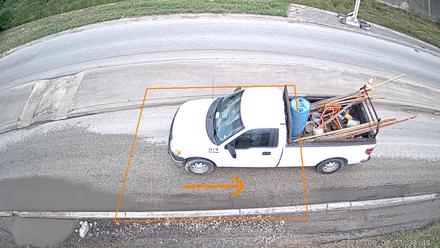Ohio's Data-Driven Approach to Wrong Way Driving
Proactive Safety in Action: Ohio's Data-Driven Approach to Wrong Way Driving
Driven by the belief that no loss of life on our roads is acceptable, Ohio is taking bold steps to prevent wrong way driving through an innovative initiative.
Driven by the belief that no loss of life on our roads is acceptable, Ohio is taking bold steps to prevent wrong way driving through an innovative initiative. Grounded in the Safe System Approach, the effort recognizes that human error is inevitable, and serious injuries and fatalities are not. As part of these efforts, the state funded a project to strengthen the foundation of its wrong way driving (WWD) prevention program and better align with Safe System principles. By addressing both systematic and location-specific factors, the initiative offers a powerful example of how transportation agencies can modernize their approach to wrong way driving prevention.
Rather than relying solely on reactive strategies, such as responding to crash data after fatalities occur, Ohio has embraced a proactive model that uses a blend of advanced technology, human behavior research, and data-driven risk assessment. Over the course of three distinct phases, the project delivered a repeatable, evidence-based framework that can be scaled to other high-risk locations across the state.

Revealing the Human Errors Behind Wrong Way Events
In phase three of the wrong way driving initiative the focus shifts from identifying high-risk locations to understanding the behavioral causes behind wrong way entries. The off-ramp on I-71 SB at Gemini Place in Columbus, Ohio, has experienced two fatal wrong way driving crashes in 2022. The ramp’s proximity to major commercial hub (Polaris Fashion Place), numerous bars and restaurants, large volume of vehicle turning movements, and an attraction for people unfamiliar with the area made it a prime candidate for deeper investigation.
Traditional crash data could confirm where the crashes happened but not why they happened or how to prevent them. ODOT sought a solution to uncover the behavioral dynamics at play in wrong- way entries.
A New Method for WWD Analysis
A temporary trailer with video analytics equipment was deployed at the off-ramp on I-71 Southbound at Gemini Place to conduct a 95-day study focused on driver behavior. The system continuously monitored vehicle movement, tracking WWD entries, driver actions, and interactions with other road users.
Key Data Elements
- Mapping of vehicle trajectories, including self-corrections
- Time-of-day analysis to identify environmental influence
- Visual inspection of ramp geometry, signage, and markings
Key Findings
 |
Repeatable Driver Error Patterns The system detected 14 wrong way entry attempts, all but one resulting from errant right turns from the westbound lane of Gemini Place onto the southbound off-ramp. |
 |
Universal Self-Correction All drivers self-corrected - most within 200 feet - suggesting the errors stemmed from momentary confusion rather than significant impairment. |
 |
Time-of-Day Risk 71% of WWD events occurred on Monday and Wednesday evenings between 4:00 PM and 8:00 PM, indicating a strong link to drivers unfamiliar with the area and dusk lighting conditions. |
 |
Design & Visibility Issues
|
Lessons Learned

Outcomes and Impacts
The initiative proved that wrong way events can be systematically addressed through a better understanding of driver behavior. It also demonstrated how non-crash incidents, often invisible in traditional data sets, can be captured and mitigated.
By expanding the scope of WWD analysis to include the why drivers make mistakes - not just where - ODOT has pioneered a new layer of proactive safety planning. Incorporating this approach into routine project development and safety studies is a major step toward reducing WWD incidents and advancing Ohio’s Roadway Safety goals.

